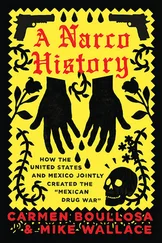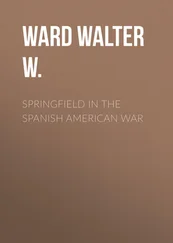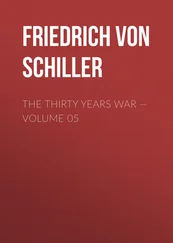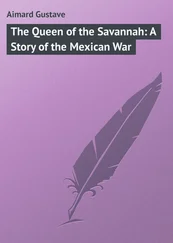Some might suggest that only a military man could properly write this work. But, in the first place, the author did not wish to prepare a technical military account of the war. His aim was to offer a correct and complete view of it suitable for all interested in American history, and it will be found that politics, diplomacy and other phases of the subject required as full investigation as did its military aspects.
Secondly, the author took pains to qualify himself for his task. The real difficulty of the commanding general consists in applying the principles of war under complicated, obscure and changeful conditions, and in overcoming “friction” of many sorts. The intellectual side of the art is readily enough understood. “In war everything is very simple,” wrote Clausewitz, the fountainhead of the modern system. “The theory of the great speculative combinations of war is simple enough in itself,” said Jomini; “it only requires intelligence and attentive reflection.” “Strategy is the application of common sense to the conduct of war,” declared Von Moltke. Arnold in his Lectures on Modern History said: “An unprofessional person may, without blame, speak or write on military subjects, and may judge of them sufficiently;” and the eminent military authority, G. F. R. Henderson, endorsed this view. “The theory of war is simple,” wrote another expert, “and there is no reason why any man who chooses to take the trouble to read and reflect carefully on one or two of the acknowledged best books thereon, should not attain to a fair knowledge thereof.” As may be seen from the list of printed sources, the present author—beginning with the volumes recommended by a board of officers to the graduates of the United States Military Academy—did much more than is here proposed.
Finally, during the entire time occupied in writing this work he fortunately enjoyed the advantage of corresponding and occasionally conferring with Brigadier General Oliver L. Spaulding, Jr., of the United States Field Artillery, formerly instructor at the Army Service Schools, Fort Leavenworth, and more recently Assistant Commandant of the School of Fire, Fort Sill, who had distinguished himself not only in the service but as a writer on professional subjects. General Spaulding has kindly discussed with the author such military questions as have arisen, and has read critically all the battle chapters. No responsibility should, however, be attached to him, if a mistake is detected.4
A word must be added with reference to the notes. These have been placed at the ends of the volumes because the author believes the best plan will be to read the text of each chapter before looking at the notes that bear upon it, and also in part because he did not wish any one to feel that he was parading his discussions and citations. The notes contain supplementary material designed to make the work a critical as well as a narrative history, and contain also specific references to the sources on which the text is based. These references involved a most annoying problem. When one’s citations are limited in number and proceed in single file, as it were, they can be handled easily. But in the present instance as many as 1800 documents were used for a chapter, not a few of which were cited more than once; and each sentence of the text—to speak broadly—resulted from comparing a number of sources. Under these conditions the usual method would have produced a repellent mass of references, perhaps greater in extent than the text itself, which would have been very expensive to print and from their multiplicity would have been extremely inconvenient. Where that method appeared feasible it was adopted, but as a rule the references have been grouped by paragraphs or topics. In many cases, however, pains have been taken to indicate in the text itself the basis of important statements, and further hints will be found in the notes. The reader can thus always ascertain in general the basis of the text, and will find specific references wherever the author has thought it likely they would be desired. The special student will wish to look up all the citations bearing on any topic that interests him. No doubt the plan is somewhat unsatisfactory, but after studying the subject for a dozen years the author feels sure that any other would have been more so.5
To thank all who kindly assisted the author to obtain material is practically impossible; but a number of names appear in the list of MS. sources, and others must be mentioned here. Without the cordial support of Presidents Theodore Roosevelt and Porfirio Diaz, Secretary of State Elihu Root, Minister of Relations Ignacio Mariscal, and Senator Henry Cabot Lodge this history could not have been written; and the author acknowledges with no less pleasure his special obligations to Whitelaw Reid, American Ambassador to Great Britain, Joseph E. Willard, Ambassador to Spain; Henri Vignaux, First Secretary of our embassy at Paris; J. J. Limantour, Minister of Hacienda, Mexico; Major General J. Franklin Bell, Chief of Staff; Major General F. C. Ainsworth, Adj. Gen.; Admiral Alfred T. Mahan; Admiral French E. Chadwick; Brigadier General J. E. Kuhn, Head of the War College, Washington; Dr. J. Franklin Jameson, Director of the Department of Historical Research, Carnegie Institution; Dr. Gaillard Hunt, Chief of the Division of MSS., Library of Congress; Dr. St. George L. Sioussat, Brown University; Dr. Eugene C. Barker, University of Texas; Dr. Herbert E. Bolton, Professor Frederick J. Teggart and Dr. H. I. Priestley of the University of California; Dr. R. W. Kelsey of Haverford College; Dr. J. W. Jordan, Pennsylvania Historical Society; Dr. Worthington C. Ford, Editor for the Massachusetts Historical Society; Dr. Solon J. Buck of the Minnesota Historical Society; R. D. W. Connor, Secretary of the Historical Commission of North Carolina; Dr. R. P. Brooks of the University of Georgia; Dr. Dunbar Rowland, Director of the Archives and Historical Department of Mississippi; T. M. Owen, Director of the Historical Department of Alabama; Dr. George M. Philips, State Normal School, West Chester, Pa.; Waldo G. Leland, Secretary of the American Historical Association; W. B. Douglas and Miss Stella M. Drumm, Librarian, of the Missouri Historical Society; Dr. Clarence E. Alvord of the University of Illinois and Mrs. Alvord (formerly Miss Idress Head, Librarian of the Missouri Historical Society); Ignacio Molina, Head of the Cartography Section, Department of Fomento, Mexico; Charles W. Stewart, Librarian of the Navy Department; James W. Cheney, long the Librarian of the War Department; Major Gustave R. Lukesh, Director, and Henry E. Haferkorn, Librarian of the United States Engineer School, Washington Barracks; D. C. Brown, Librarian of the Indiana State Library; Victor H. Paltsits, Department of MSS., New York Public Library; W. L. Ostrander of the library at West Point; Lieutenant James R. Jacobs, 28th United States Infantry; Dr. Katherine J. Gallagher; Dr. Martha L. Edwards. To the widow of Admiral Charles S. Sperry and their son, Professor Charles S. Sperry, the author is particularly indebted for an opportunity to examine important papers left by William L. Marcy. Valuable suggestions were most kindly given by Dr. William A. Dunning of Columbia University and Dr. Davis R. Dewey of the Massachusetts Institute of Technology, who read portions of the text, by Francis W. Halsey, Esq., of New York, who read nearly all of it, and by Dr. Edward Channing of Harvard University, who was so good as to look over more or less closely all of the proofs. To the helpers not mentioned by name the author begs leave to offer thanks no less sincere.
Finally, the author desires to mention the enterprise and public spirit shown by the publishers in bringing out so expensive a work at this time of uncertainty.
The Century Club, New York
September, 1919.
Читать дальше












